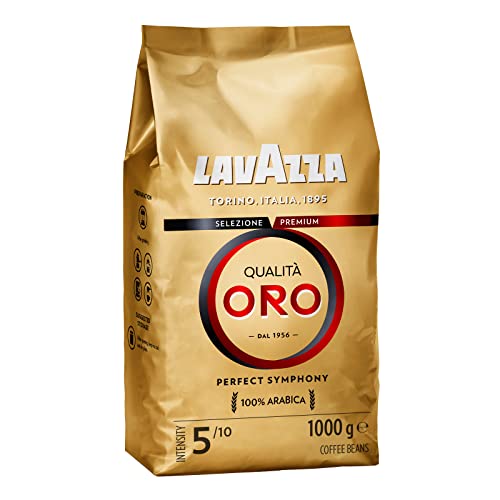The 10 Most Scariest Things About Arabica Coffee Beans 1kg
페이지 정보
작성자 Shayna 작성일25-01-17 18:15 조회99회 댓글0건관련링크
본문
 Arabica Coffee Beans 1kg
Arabica Coffee Beans 1kgThe arabica bean is among the most prized coffee species. It grows at higher altitudes along the equator, and requires particular climate conditions in order to thrive.
 New cultivars of buy 1kg coffee beans have been created that are more resistant against the effects of climate change and disease. These new varieties provide unique flavors that distinguish them from other types of coffee.
New cultivars of buy 1kg coffee beans have been created that are more resistant against the effects of climate change and disease. These new varieties provide unique flavors that distinguish them from other types of coffee.Origin
Arabica beans are the most well-known beans for Western coffee blends and make up around 60% of all coffee production worldwide. They are more resistant to drought and heat than other varieties of coffee, making them more suited to growing in warmer climates. They produce an intense and creamy brew with a smooth flavor. They also contain less caffeine. They are also popular for espresso-based drinks.
The Coffea arabica plant is an evergreen or small tree that thrives at higher elevations and enjoys tropical climates with moderate temperatures, ideally between 15 and 24 degrees Celsius (59-75 degF). The plant requires a constant rainfall of between 1,200 and 2,200 mm annually. Researchers have developed a number cultivars for cultivation. It has a high genetic diversity. These include Bourbon and Typica which are the progenitors of the majority of modern arabica coffee cultivation today.
Wild plants of the genus Coffea are bushy and their leaves are simple elliptic-ovate, to the oblong size, 6-12cm (2.5-3 in) long and 4-8 centimeters (2-3 in) wide. The fruits are drupes which contain two seeds that are commonly referred to as coffee beans. They are protected by an outer fleshy membrane that is usually black, red or purple and an inner skin that can range from pale yellow to pink.
Raw coffee beans have been consumed for centuries because of their unique flavor and stimulating qualities. In contrast to the Robusta variety of coffee beans that is the basis of the majority of blended coffees, arabica beans are best enjoyed roasted to medium or light because this preserves their original properties and flavor. The earliest written documents of drinking coffee date back to around 1000 BC in the Kingdom of Kefa, Ethiopia, where members of the Oromo tribe crushed the beans and mixed them with fat to make an alcoholic paste. It was consumed as a stimulant.
The location, climate and farming methods of the region from which coffee beans are cultivated determine the precise origin of the coffee. It is similar to apples grown in various regions, and can be distinct from each other by their unique taste and texture. To determine the source of a specific coffee bean, FT/MIR spectrophotometry can be used to determine markers, such as trigonelline or chlorogenic acid that differ depending on the conditions in which the bean was grown.
Taste
The flavor of arabica coffee beans is soft and delicate with chocolate or fruity undertones. It is not as bitter and astringency, and is one of the top-quality varieties available on the market. It also has a lower percentage of caffeine than Robusta coffee, which makes it ideal for those looking for a delicious cup of joe without the high-sugar content of other beverages.
The roast level, processing method, and the variety of arabica beans all affect the taste. There are a variety of varieties of arabica coffee, such as the Typica variety, Bourbon, Caturra, and Kona and each one has distinct flavors. The various levels of sugar and acidity in arabica coffee also influence the overall flavor profile.
The coffee plant grows in the wild at high elevations near the equator, but is most commonly cultivated by people at lower elevations. The plant produces fruit in red, yellow or even purple with two seeds. These seeds are called coffee beans, and they are the primary ingredient that gives arabica coffee its distinct flavor. When the beans are cooked, they get the familiar brown color and flavor that we all recognize and enjoy.
After harvesting, beans are processed either wet or dried. The beans that have been processed with water are cleaned to remove the pulp that is left behind and then fermented before being dried in the sun. The wet process helps to preserve the arabica coffee's inherent flavor profiles, whereas the dry method results in a more robust and earthy flavored.
The roasting of arabica coffee beans is an essential element of the production process and can significantly change the taste and aroma of the final product. Light roasts show off the arabica coffee bean's natural flavors while medium and dark roasts balance the original flavors with the characteristics of roasted coffee. If you're looking to enjoy an experience that is truly unique pick a blend made of 100% arabica beans. These higher-quality coffee beans are distinctive in flavor and aroma that can't be matched by any other blend.
Health Benefits
The caffeine in coffee can give you the energy that you need to get going in the morning. It is also believed for its health benefits and can help keep you alert throughout the day. It has a unique and intense flavor that can be enjoyed many different ways. You can add it to ice-cream or sprinkle it over desserts.
arabica coffee beans 1kg beans are preferred by all coffee brands because they produce the perfect cup of coffee that has smooth and creamy texture. They are usually roast at a medium-darkness and are known for their chocolatey, fruity taste. They are also known for having a smoother flavor and less bitterness than beans like robusta.
The origin of arabica coffee beans dates back to 1,000 BC when the Oromo tribes of Ethiopia first began drinking it as stimulants. Then in the 7th century, Arabica was officially named as the coffee bean following it traveled to Yemen where scholars roast and ground the beans. They wrote the first written record on coffee bean 1kg making.
Today coffee beans are grown in over 4,500 plantations across India with Karnataka being the largest producer of it. In 2017-18 the state produced a record 2,33.230 metric tons of arabica coffee. There is a variety of arabica varieties available in Karnataka that include Coorg Arabica, Chikmaglur Arabica and Bababudangiris Arabica.
Green coffee beans are rich in antioxidants. They also contain large quantities of chlorogenic acids, which are part of a group of phenolic compounds. They are believed to possess anti-diabetic and cardioprotective properties. When the beans are cooked, they lose almost 50-70 percent of these compounds.
In addition to coffee, arabica beans have a small amount of vitamins and minerals. They are a great source of potassium, magnesium, manganese, and niacin. Beans are a great source of fiber which aids in reducing cholesterol and aids in weight loss.
Caffeine Content
When they are ground and roasted the arabica coffee beans uk 1kg beans contain an amount of caffeine that ranges from 1.1 percent to 2.9% which is equivalent to 84 to 580 mg of caffeine per cup. This is significantly lower than the caffeine content of Robusta beans which can have up to 4.4% caffeine. However, the amount of caffeine that is consumed will be contingent on various factors such as the brewing method and water temperature (caffeine is more readily extracted at higher temperatures) as well as the amount of time that the beans are roasting (a darker roast usually has more caffeine than lighter roasts) and the extraction technique.
Coffee also contains chlorogenic acids, which are antioxidants and a part of the phenolic acids. These compounds are known to reduce glucose absorption and have been linked to reduced risks of heart disease, diabetes and liver disease. They also boost the immune system and aid in weight loss.
Moreover, coffee has some minerals and vitamins. It has magnesium, niacin and riboflavin. It also contains potassium and a very small amount of sodium. Nevertheless, it is important to note that coffee consumption in its natural state without sugar or milk, should be limited as it has a diuretic effect on the body and may cause dehydration.
The background of the coffee plant is fascinating. It was discovered by Oromo tribes in Ethiopia around 1000 BC. It was a popular drink among tribesmen to sustain themselves during long journeys, however it wasn't until after that it became a beverage and was introduced to the market following the Arabian monopoly was lifted that it got its name. Since then, it has become popular all over the world and has grown into a global industry that provides a wealth of advantages to both human health and the environment. The secret to its popularity is that it blends a delicious taste with numerous health-promoting qualities. It can be a healthy addition to your diet when consumed in moderation. Apart from being delicious, it can also give you an energy boost and make you feel more alert and productive throughout the day.
댓글목록
등록된 댓글이 없습니다.
